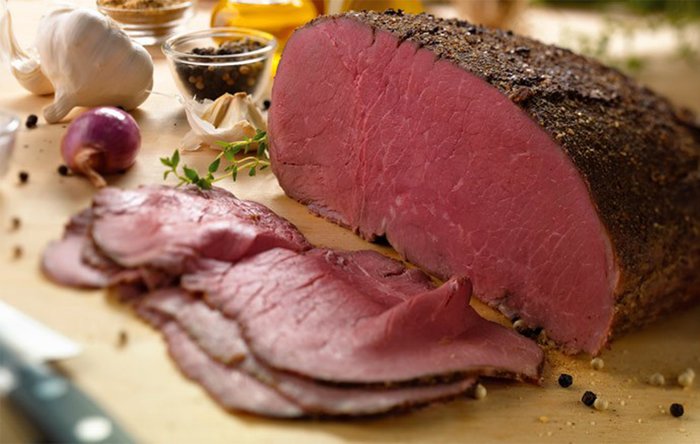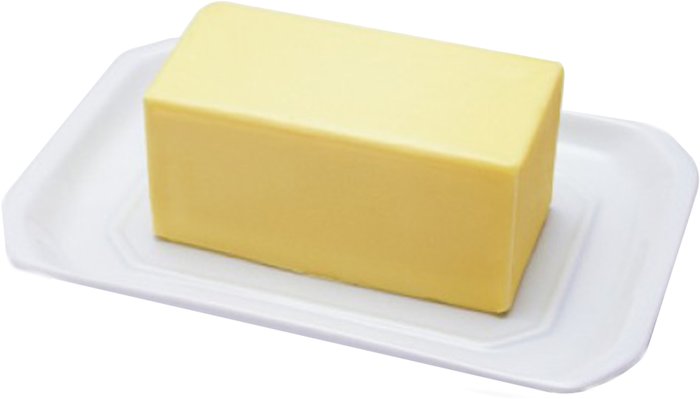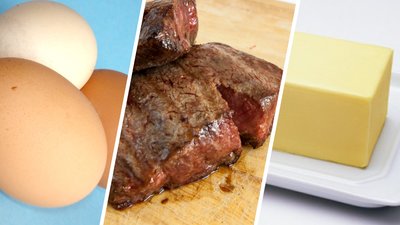Saturated fats are right up there with witches and wolves when it comes to things people have a kind of knee-jerk reaction to. For years, these fats (as opposed to the "good" unsaturated fats) were blamed for everything from coronary heart disease to atherosclerosis.
But as far back as 2007, the American Dietetic Association and Dietitians of Canada concluded that there is no link between eating more saturated fat and an increased risk for cardiovascular disease.[1,2] In fact, a study found that stearic acid—the saturated fat found in eggs, sausage, bacon, and ribs—had no effect on cholesterol levels in the male subjects, though it did have a negative impact on the HDL levels in the female subjects.[3] These fats also improve the body's ability to produce testosterone and vitamin D, both of which help build muscle.
Of course, as with any food, too much of a good thing can be a bad thing. But given their long history of being demonized as heart-stoppers, saturated fats make up only a small fraction of most people's diets.
Here are three ways to get more saturated (and tasty) fats back into your diet. All three pack a powerful nutrient punch. Avoid them no more!
1. Eggs
A chicken egg contains about 200 milligrams of cholesterol, which is almost the entire daily recommended amount, so you don't want to start every day with a three-egg omelet. But they have only about 1.5 grams of saturated fat, which is about 10 percent of the daily recommended amount.

Eggs have a lot going for them. They are literally the gold standard of protein, with about 6 grams of high-quality protein per egg. They're also one of the few food sources of vitamin D, contain essential omega-3 fatty acids, and provide significant amounts of an essential vitamin-like nutrient, choline.
Choline helps produce acetylcholine, a neurotransmitter related to motor and memory functions. Choline also is necessary for proper liver function.[4]
2. Red Meat
Beef is another excellent source of protein; it's also rich in iron and zinc. Most of the iron in our bodies is present in hemoglobin, where it binds to the oxygen we inhale and transports oxygen molecules to every cell in our body. So iron is pretty important for those of us who like to breathe.

Consuming red meat is the best way for women (who are more likely to be iron-deficient than men) and endurance athletes to get a big boost of this essential element. Red meat also provides zinc, which plays an important role in supporting proper immune function. Red meat also helps support a healthy metabolism.
3. Butter
Butter has been blamed for causing heart attacks—and for preventing them. It has helped people get fat—and skinny. It has been declared one of the worst forms of saturated fat—and one of the best. The reigning wisdom of today is that butter is fine, as long as you use it in moderation and as part of a balanced diet.

There is no disagreement that butter contains small amounts of medium-chain triglycerides, which may have a positive impact on your physique.[5] These triglycerides are a readily available source of fuel for the brain and muscles, and they're not stored as easily as the long-chain fatty acids found in most foods. The easier it is for your body to store fats, the more fat tissue you have.
Practical Recommendations
Foods that contain saturated fats could easily be the poster children for moderation. Like so many foods we humans have been eating for probably thousands of years, eggs, red meat, and butter have a place in our diets—just not as the focal point of every meal, every day.
By limiting these foods to one-third of your total daily fat intake, you can enjoy a delicious way to get many of the essential nutrients you need to live well, gain stamina, and build muscle.
References
- Kris-Etherton, P.M. & Innis, S. (2007). Dietary Fatty Acids – Position of the American Dietetic Association and Dietitians of Canada. American Dietetic Association Position Report. Journal of the American Dietetic Association, 107(9), 1599-1611.
- Griel, A.E. & Kris-Etherton, P.M. (2006). Beyond saturated fat: The importance of the dietary fatty acid profile on cardiovascular disease. Nutrition Reviews, 64(5), 257-62.
- Yu, S., Derr, J., Etherton, T.D. & Kris-Etherton, P.M. (1995). Plasma cholesterol-predictive equations demonstrate that stearic acid is neutral and monosaturated fatty acids are hypocholesterolemic. American Journal of Clinical Nutrition, 61, 1129-39.
- Zeisel, S.H. & Corbin, K.D. (2012). Choline. Present Knowledge in Nutrition. John Wiley and Sons. 10th Edition, 405-418.
- Costa, A. R., Rosado, E. L., & Soares-Mota, M. (2012). Influence of the dietary intake of medium chain triglycerides on body composition, energy expenditure and satiety: a systematic review. Nutrición Hospitalaria, 27(1), 103-108.

